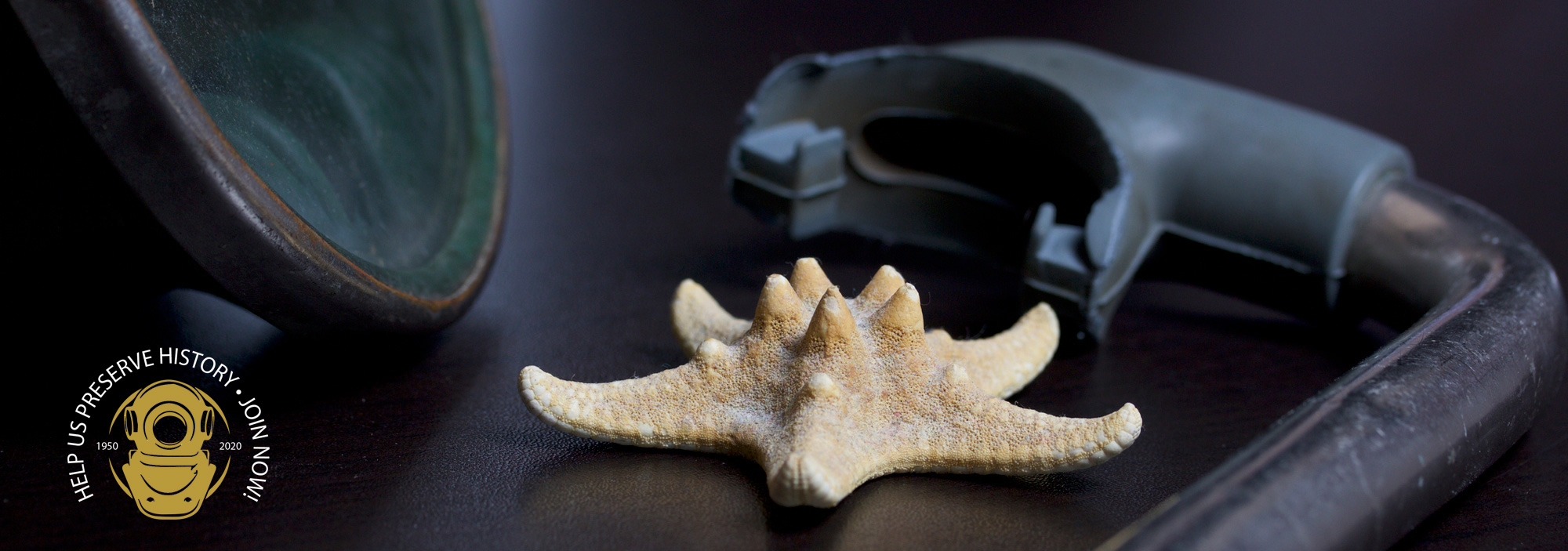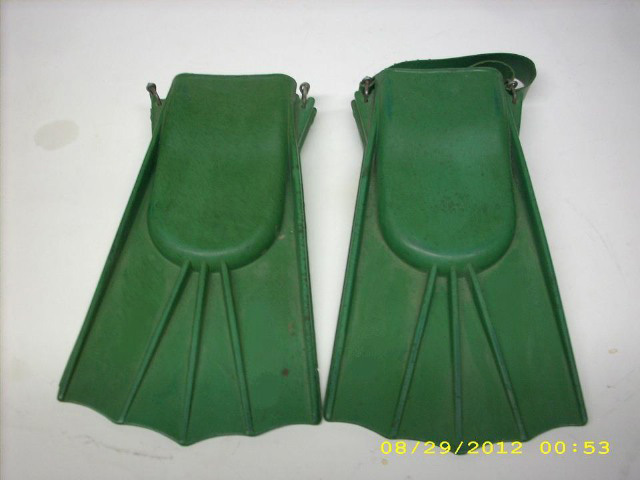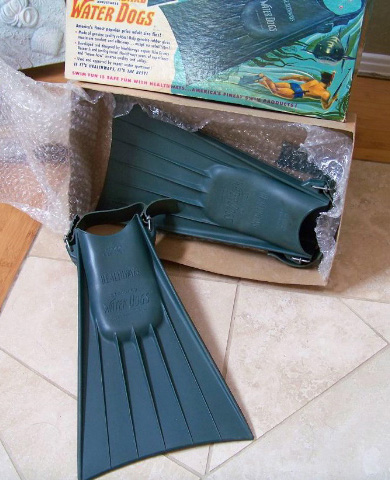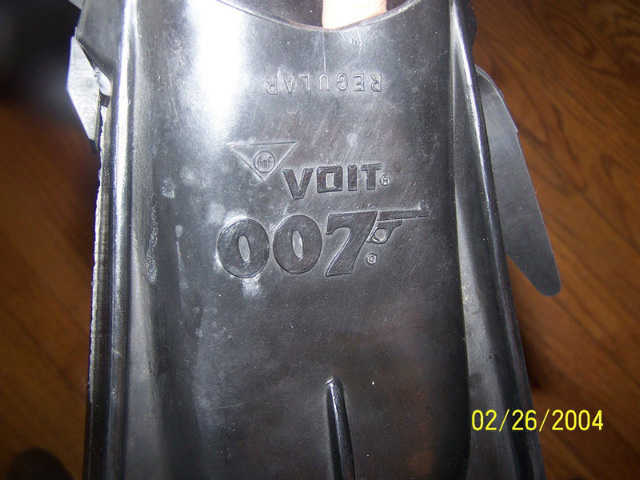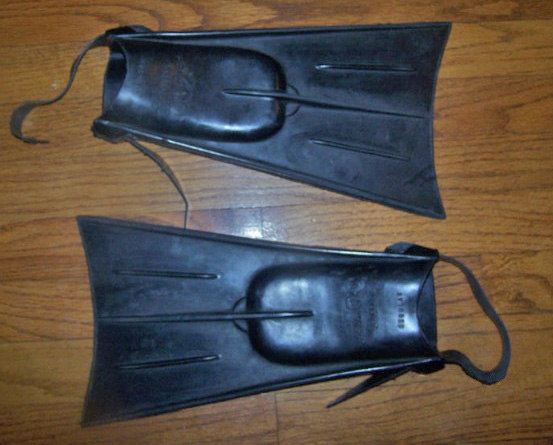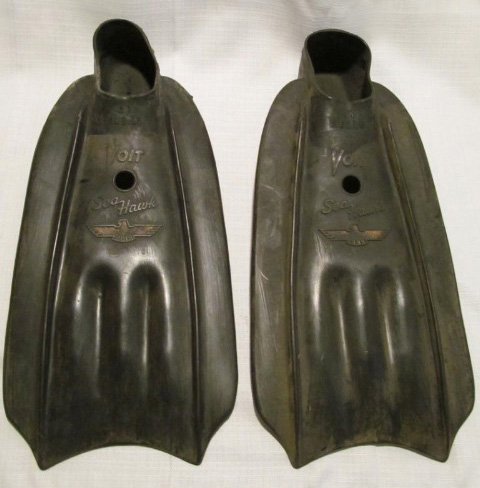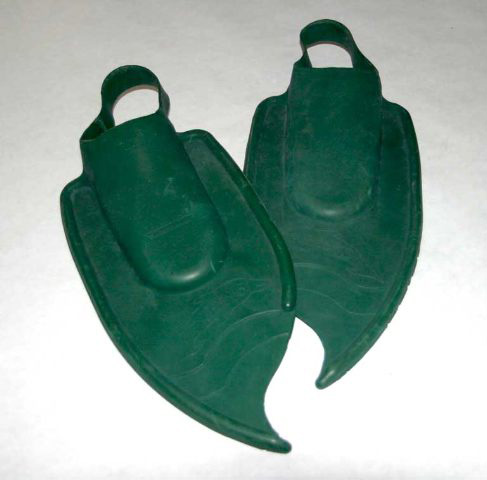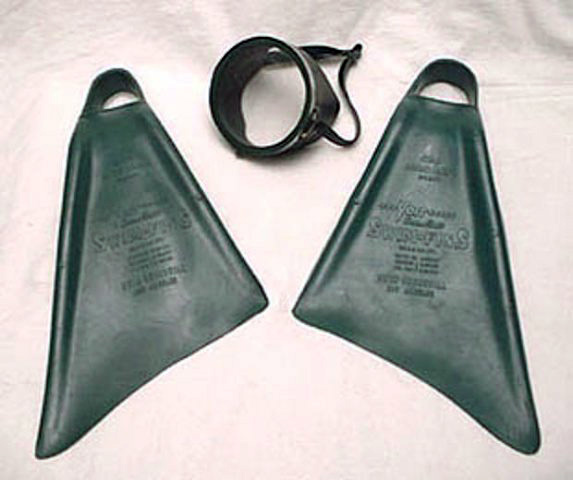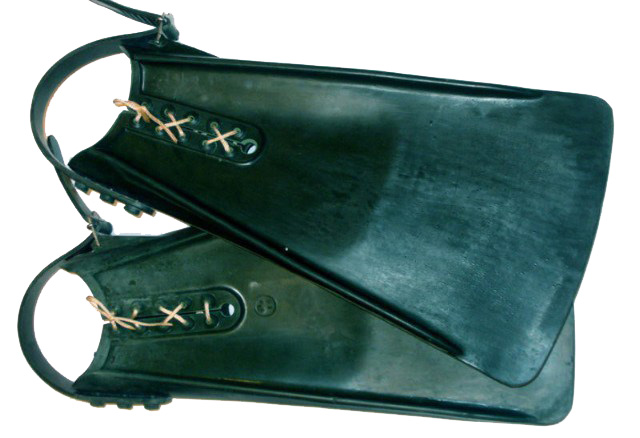The evolution of scuba diving fins from 1950 to 2020 reflects major advancements in materials, hydrodynamics, and ergonomic design, largely driven by military research, recreational diving growth, and competition among manufacturers. Here’s a decade-by-decade overview:
1950s – The Basics Take Shape
-
Materials: Early fins were made from solid rubber, modeled after swim fins used in WWII.
-
Design: Typically long and flat, with full-foot pockets. These were stiff and not very efficient but provided a big leap in propulsion.
-
Manufacturers: Voit, Churchill, and U.S. Divers were prominent at this stage.
1960s – Open-Heel Designs Emerge
-
Introduction of adjustable straps allowed for use with booties in colder water.
-
Blade design remained relatively basic, but longer blades started appearing for improved thrust.
-
Rubber compounds improved slightly for flexibility and durability.
1970s – Performance Meets Innovation
-
Split fin concepts were explored, though not popularized yet.
-
Channeling and rib reinforcements added for structural support and better water flow.
-
Fins started being designed for different water temperatures, with stiffer fins for cold-water diving.
1980s – Material Advances
-
Thermoplastics and composite materials replaced heavy rubber, reducing weight.
-
Dual-material fins (rubber + plastic combinations) improved efficiency.
-
More ergonomic foot pockets made fins more comfortable for longer dives.
1990s – Hydrodynamics Refined
-
Introduction of vented fins (like Scubapro Jet Fins) became more widespread; vents reduce drag on the upstroke and improve efficiency.
-
Channel-style blades (e.g., Mares Plana Avanti) became popular for better power transfer.
-
Split fins (e.g., Atomic Aquatics SplitFins) introduced mainstream — offering easier kicking with less effort.
2000s – Specialization and Biomechanics
-
Fins became highly specialized: different styles for tech diving, snorkeling, freediving, and recreational scuba.
-
Split vs. paddle fin debates became prominent: split fins excel in efficiency but lack raw power; paddle fins offer better control in strong currents.
-
Introduction of spring straps for easier donning/doffing and durability.
-
Better energy transfer designs, using stiff central spines and flexible edges.
2010s – Ergonomics, Power, and Modularity
-
Fins incorporated biomechanical engineering to reduce cramping and optimize leg movement.
-
Use of carbon fiber and advanced polymers in high-end models for tech and freedivers.
-
Modular systems for tech diving fins allowed customizable blades, foot pockets, and straps.
-
Travel fins became a category — lightweight and compact models for easy packing.
By 2020: The Key Trends
-
Split vs. paddle choice tailored to diving conditions and personal preference.
-
Tech diver preferences leaned toward stiffer paddle fins (e.g., Jet Fins, Hollis F1).
-
Recreational divers preferred lighter, ergonomic designs with efficient thrust.
-
Continued refinement in materials science improved durability and performance.
-
Environmental concerns led to some brands offering recycled materials or more sustainable production practices.
Navy Underwater Demolitions Teams “UDT” Fins – Circa post WWII throughout the 50’s-early 60’s
During the inception of the U.S. Naval underwater warfare units, Strong swimmer, Frogmen, OSS-UDT and finally SEALs teams, the earliest days utilized Churchill style fins but shortly after WWII the Navy began looking for a more military grade “hardier-use” fin to stand up to the rigors of battlefield demands. The UDT fin filled that demand and became a battle tested piece of Mil-Spec Navy issued field gear. By the time the Viet-Nam conflict began in the early 60’s the Navy had adopted variations of the popular black, or military brown Rocket and Jetfin designs, which remain in use today.
Healthways “Web-Feet” Fins – Circa early to mid 50’s
Yet another version of Healthways fin designs, very similar to the Waterdog style fin, the Web Feet were slightly softer and were perhaps more comfortable because of the pliable kick effect, however they would offer less power and were probably more effective and popular as a snorkeling or skin-diving fin.
Healthways Waterdog Fins
The waterdog fins were a departure from some of the earliest fin types when the shape began to take on the more typical “fan-blade” style, and finally offered an adjustable style heel strap rather than the fixed size style making the fin more desirable to a broader number of foot sizes. The pair of waterdogs on display here are new condition in the original 1954 packaging.
Voit James Bond 007 Fin
In 1965 Voit was commissioned to supply all of the dive equipment for the James Bond “Thunderball” feature film. The now classic movie highlighted modern day scuba equipment in a way it had never been done before. Underwater battle scenes with virtual underwater armies of divers engaged in watery spear gun warfare, along with underwater vehicles and a brand new single hose regulator worn by James Bond (Sean Connery), while everyone else was stuck using double hose units. It is unclear as to whether the fins were actually used in the making of the film, or simply a marketing maneuver attempting to capitalize on the rage over anything “James Bond” at the time.
Voit “Sea-Hawk” Fin – Circa 1960
A unique fin style, the Sea-Hawk was another design experiment of the times. Featuring a foot pocket style, with the blades extending up into mid-length of the foot pocket on either side thus widening and creating more blade surface. The Sea-hawk fin was only marketed in the Voit dive equipment catalogue one year in 1960.
Healthways “Webby’s Fins – Circa-early 50’s
Webby’s are some of the most unusually designed fins there are. Harkening back to the very beginnings of skin and scuba diving, nearly all design concepts were worth testing as everything was virtually brand new within the infancy of the dive industry. By the early 50’s nearly everything fin-wise had shifted to the more standard fan-blade style commonly used in the majority of fins manufactured now.
Owen Churchill Fin
The Churchill fin was the first commercially manufactured diving fin. Conceived and developed around 1937, the design was applied for U.S. patent in 1940 and was granted patent in 1943. In the early 50’s Voit-Swimaster began marketing the Churchill fin design via licensing agreement, both entities had their brand name embossed in relief on the fins as a result.
Only minor changes have been made to the original design since its inception, mainly in synthetic rubber compounds used in its modern manufacture. Oddly, the Churchill fin style regained popularity in the early 80’s as a boogie board and sky diving accessory due to its relatively short, yet effective blade design, and remains a staple in those sports today.

